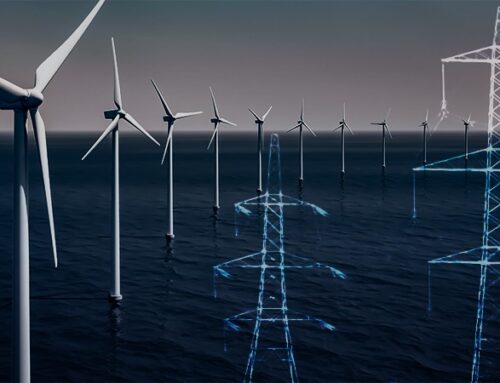The use of hot springs has been known since antiquity and there is evidence that Native Americans used geothermal energy for cooking as early as 10,000 years ago, yet despite this, by the end of 2019, there was only 13.9 GW of installed geothermal plant globally, a tiny fraction of the world’s generation capacity.
Most people tend to associate geothermal energy with Iceland, and indeed, 30% of the country’s energy production is from geothermal sources, but in fact, the United States has the largest amount of geothermal capacity installed at 3.65 GW, and only 5 countries including New Zealand have more than 1 GW of capacity.
The UK is not typically considered to be a hotspot of geothermal energy, but last week Ecotricity announced a 10-year Power Purchase Agreement for power generated at the United Downs geothermal site in Cornwall. The deep geothermal plant is being developed by Geothermal Engineering, and is expected begin operating in 2022. The plant aims to supply around 3 MW of electricity and up to 12 MW of heat for local use.
What is geothermal energy?
It is often assumed that in order to have geothermal energy there needs to be local tectonic and volcanic activity, but this is not the case. The term “geothermal energy” refers generically to heat that is stored below the earth’s surface – the majority of the earth’s crust has a temperature in excess of 100ºC, so trapped heat is plentiful. This heat is stored at different depths and so different methods are used to extract it.
 Solar geothermal energy is stored at relatively shallow depths of around ten metres below the surface. Solar energy is absorbed into the ground and can be extracted all year round through ground-source heat pumps: which extract heat either through the use of ground heat exchangers (pipes installed in the ground through which a heat carrier fluid is circulated: “closed-loop” systems) or from pumped groundwater stored in aquifers (“open-loop” systems) and mines.
Solar geothermal energy is stored at relatively shallow depths of around ten metres below the surface. Solar energy is absorbed into the ground and can be extracted all year round through ground-source heat pumps: which extract heat either through the use of ground heat exchangers (pipes installed in the ground through which a heat carrier fluid is circulated: “closed-loop” systems) or from pumped groundwater stored in aquifers (“open-loop” systems) and mines.
A heat pump extracts the low-grade heat from the fluid and upgrades it to more useful temperatures (>40°C) required for the heating of buildings. The cold carrier fluid/groundwater is then returned to the subsurface. Ground-source heat pumps can be used for heating, cooling or both.
Water geothermal energy, also known as conventional hydrothermal geothermal energy, occurs when underground bodies of water form close to volcanoes, where temperatures can reach 200ºC (the high pressure means the water still exists in liquid form). Depending on the geological formation, this water can circulate in liquid or gaseous form through deep wells, and can be used to drive turbines for electricity generation. This type of geothermal energy is not available in the UK.
Hot Sedimentary Aquifers are geographically more common than conventional hydrothermal resources – relatively few people live near regions of tectonic or volcanic activity – and are generally deeply buried, fluid filled sandstone or limestone reservoirs with relatively high natural porosity. The deeper the reservoir the higher the temperature, but there is an economic trade-off between the cost of drilling to greater depths and the amount of additional heat which can be accessed.
In hydrothermal systems, heat is transported by groundwater, circulating within deep aquifers, and is exploited through a “doublet system” consisting of two deep boreholes drilled over a range of depths down to 5 km: one is for abstracting the hot water and the other is for re-injecting the cooled water back into the geothermal system.
Deep geothermal energy occurs when rocks deep underground such as granite have a higher temperature than the surrounding earth due high concentrations of radioactive uranium, potassium and thorium whose radioactive decay generates heat. As the granites are not naturally porous or water-bearing, the heat is abstracted by injecting water into the system and circulating it between two deep boreholes through existing or enhanced fluid pathways, creating what is known as an engineered geothermal system.
This heat can be high enough to generate steam that can be used to drive turbines. Cornwall in particular has significant granite deposits suited to this purpose.

Geothermal energy has a number of advantages over other forms of energy:
- It has consistent output unlike most other renewable energy which is intermittent;
- It is scalable capable of being used in individual homes as well as at large scales;
- No new technology is needed;
- The long-term cost of operation is low.
However there are also some drawbacks:
- Capital costs are high both at the residential and the utility scale;
- Large amounts of space are required;
- Small local earthquakes can result;
- Local geology is a limiting factor.
 Sub-surface temperatures in the UK are around 39°C at 1,000m, 89°C at 3,000m and 139°C at 5,000 m. While these temperatures are classed as low enthalpy and are below the economic threshold for conventional power generation which requires temperatures above 160°C, they are high enough to provide heat for direct-use space heating as well as for heat-intensive industrial processes.
Sub-surface temperatures in the UK are around 39°C at 1,000m, 89°C at 3,000m and 139°C at 5,000 m. While these temperatures are classed as low enthalpy and are below the economic threshold for conventional power generation which requires temperatures above 160°C, they are high enough to provide heat for direct-use space heating as well as for heat-intensive industrial processes.
There are several regions in the UK where hydrothermal systems expoiting hot sedimentary aquifers could be developed, many of which are in areas of high heat demand.
Medium-enthalpy geothermal potential exists in the UK in areas where geological features, such as the presence of radiogenic granites, have resulted in increased heat flows, eg Cornwall, northern England and Scotland. Temperatures at economically drillable depths (around 5 km) are sufficiently high for power generation with binary-cycle power plants or for industrial and residential heating.
UK geothermal projects
The deepest geothermal energy well ever drilled in Britain has been completed in Cornwall at the United Downs project for the country’s first deep geothermal electricity plant. The injection well has a depth of 2,393m and the production well goes down 5,275 m. At this depth, temperatures reach 195oC, making it also the hottest such well.
The wells are j-shaped to intercept a target geological structure known as the Porthtowan Fault. This structure allows liquid to be circulated through the hot rock from the injection well to the production well in a continuous cycle.

Geothermal brine will not be fed through the wells, acquiring heat. The heated brine will then pass through a heat exchanger to heat a secondary fluid that expands to drive a turbine (like steam). This secondary fluid is then condensed back into liquid form with the two circuits (geothermal and binary fluid) operating around the clock.
The plant is expected to cost £30 million and begin operations in 2022, and the developers hope to also secure a heat contract with a local rum producer.
In fact, the United Downs project is not the first modern-day geothermal scheme in the UK. The city of Southampton boasts a district heating and cooling scheme that integrates a geothermal well with combined heat and power (“CHP”) plants and a biomass facility .
 The origins of the scheme go back to the 1980’s when the Department of Energy began to investigate the potential of geothermal aquifers in the UK. In 1981, a well was drilled in the centre of Southampton, within the Wessex Basin, but was considered too small for the large-scale district heating scheme.
The origins of the scheme go back to the 1980’s when the Department of Energy began to investigate the potential of geothermal aquifers in the UK. In 1981, a well was drilled in the centre of Southampton, within the Wessex Basin, but was considered too small for the large-scale district heating scheme.
The Department of Energy abandoned the project, but it was taken up by the City Council which continued its development alongside commercial partner, Utilicom Ltd (now part of Engie), with construction beginning in 1987. The scheme now provides over 40 GWh of heat each year, alongside 26 GWh of electricity and 7 GWh of chilled water.
Within the well, water was found at a depth of almost 1,800m with a temperature of 76°C. The water rises naturally within the well to within 100m of the surface, from where it is pumped to the heat station.
 After the scheme began to operate, the Council realised that other heating sources could be added into the heating infrastructure so a small combined heat and power facility was integrated into the system, with more being added later. District cooling was included in 1994 to meet the growing demand for chilled water and air conditioning.
After the scheme began to operate, the Council realised that other heating sources could be added into the heating infrastructure so a small combined heat and power facility was integrated into the system, with more being added later. District cooling was included in 1994 to meet the growing demand for chilled water and air conditioning.
The scheme is similar to a very large domestic central heating system: hot, treated water circulates underground from the heat station to customers in the city centre and is then returned for re-heating. A closed loop of high-tech pipes distributes heat from all the city’s energy sources. Each user has a pair of pipes, with isolating valves and a heat meter, which replace a conventional boiler. The chilling system circulates cooled water from the heat station through additional insulated mains. A CHP plant provides the power for the pumps, with surplus power being sold to the electricity grid.
The scheme has now been running for over 30 years, at a total capital cost of £13 million, and now includes 7 MW of CHP, a 2 MW geothermal well, and 1 MW of biomass energy. The operating reliability has been close to 100%.
Is geothermal energy going to be hot?
The UK has significant potential for geothermal energy, which is an established generation method that carries no technology risk, unlike many of the other “new” energy technologies being proposed in the context of net zero. There is also the potential for geothermal plants close to demand centres, reducing the need for expensive new transmission infrastructure.
But this is a double-edged sword, since drilling at these depths, whether for geothermal energy of for oil and gas extraction, can create earth tremors, which may not be acceptable to local populations, as was seen with the hydraulic fracking problems around Blackpool a few years ago.
The bigger challenge though is one of cost. The capital cost of a geothermal plant is about £1.8 million /MW, which is significantly more than a new CCGT which costs about £0.80 million /MW (based on ESB’s Carrington plant completed in 2017). Small-scale geothermal projects such as the United Downs scheme can cost even more, although they include the possibility of heat contracts with local homes and businesses.
“[Geothermal energy] is not about finding new resource. The mining legacy has created a lot of holes in the ground beneath our feet, which have filled up with water. The water has become heated and is now available without drilling deep wells. This is relatively easy to set up.….Across the UK, it has recently been assessed that there are over 2 million GW hours of low carbon energy stored in mine workings across the UK,”
– Claire Perry speaking in 2018, then Minister for Clean Growth
Projects such as United Downs are needed to test the potential for geothermal energy in the UK, either for electricity generation or the supply of heat. The Southampton scheme has provided district heating reliably for over 30 years, but at relatively high cost. It may be that geothermal energy shares the fate of pumped hydro in the UK….a great, well established technology, but one that is simply too expensive to be widely deployed given the country’s geology and geography.






The fracking element at United Downs rivals Cuadrilla at Preston New Road.
https://datawrapper.dwcdn.net/P5OE0/2/
BGS report depths of 4km, so not exactly old Cornish tin mine workings, and TD is reported as 5.2km. Still, it does serve to demonstrate that such things can happen without attracting half of Greenpeace and XR in protest. But I think the real moneyspinner here could turn out to be Lithium. Start here at United Downs:
https://www.cornishlithium.com/pilot-lithium-extraction-plant/
Hi Kathryn…….thanks for an excellent post on for me, a little known subject.
Feel well prepared for when the subject hits the media misinformation mill.
Interesting input from datawrapper re lithium extraction; a real plus.
Barry Wright Lancashire.
Hi again…..recently learned of an exciting new venture on the old site of decommissioned Blyth PS in Northumberland.
A Britishvolt/Siemens partnership are proposing to build the UK’s first automotive gigafactory; think Tesla.
Starting summer with a capex of £2.6bn, 3000 jobs, a major project.
Battery production is planned for 2023.
The United Downs lithium extraction plant referred to by datawrapper above has real relevance here.
Imagine the mass production of world class lithium-ion automotive batteries using ethically sourced lithium here in the UK. With the added bonus of extracting useful heat in the process; swings & swings as we say in Lancs.
So much to contribute & ease the conscious of EV owners throughout the world.
Barry Wright Lancashire.
Finally not overlooking the possibility of
Good to see German/UK collaboration post Brexit.